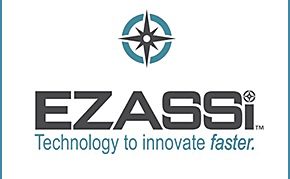Ever since COVID-19 pushed educational institutions across the world to go online more, there was a surge in the adoption of education technology. From using generic productivity tools like Zoom to going all the way in with specialized online education platforms, there has been a lot of talk on the education technology news sector.
While the initial rush towards getting just about any tool to teach, over the years this has matured immensely and today, digital education is a regular feature in many schools and colleges.
But in edtech news recently, a question that is being oft raised is the educational quality and modes that have failed to either change or adopt in line with the new forms of classrooms.
Task Overloading
When it comes to remote education, children are exposed to the same classes as they would do in a normal situation. However, with the young minds more at home, there has always been a pressure to make them work harder to learn.
This has resulted in a significant increase in tasks and assignments handed down. Current educational models are built around assessing students through a grading system to make sure they prepare and learn in order to pass.
In online teaching, we have associated this laborious task completion activity with learning, not as a tool to assess how much has been assessed. Students spend too much time filling out worksheets. As young minds, they then become more obsessed with getting higher grades, rather than actually learning.
Audio/Visual Stuffing
Just like when students are handed tons of homework and assignments, online classes are full of audio and visual material that forces students to sit through the lectures and stare at the screen.
This becomes more pronounced with pre-recorded lectures, where the teacher has built hours long videos and simply uploads for the students to watch.
In a normal classroom, there would be questions and answers, debates, thought provoking insights, etc. However, these seldom exist in an online class. Students in the end are just gobbling up content and not contemplating on what has happened, why it happened and what alternatives could be used.
Lack of Interaction
Learning is a Pedagogy and Heutagogy process. While in a pedagogy setup the teacher plays a central role in imparting education, students need to have a Heutagogy environment too where they take cues from the teacher and the educational material and then discuss it amongst themselves.
In online classes, the pre-recorded lectures, or the compulsion to just teach the class with visual aids like presentations can create a false sense of fulfillment for the teacher. Sitting in front of a computer screen can be as mentally draining for the lecturer as the students. This leads to a near total lack of interaction, discussion or just Q&A.
Online classes need to be more like workshops where there is less of lectures and more of interaction. A teacher can begin the class with a short lecture, but then needs to let the students discuss and debate the finer points, take sides, and try to prove their reasoning.
This allows for not only a two-way communication, but encourages the students to speak their minds and listen to the other sides as well.
How to Upskill Your Online Teaching
The first thing you can do as an educator is to reassess your lectures. Do they impart education or are they time slot fillers?
Make sure that any activity you set in the classroom, from interacting with the students to pursuing them to debate on the pros and cons of any point, you use the right edtech. Simple video conferencing tools can be very effective as they provide everyone with a voice and a chance, just like in the physical classroom.
Explore the edtech you are using. There can be very interactive tools in many educational software. From in-built voting to as simply as using an independent tool on your computer with a screen sharing feature.
Presentation tools like PowerPoint can be very effective in online teaching. The latest iterations have some powerful visual options. This summer, consider exploring the presentation software capabilities. There are tons of online courses (see the funny irony in this?) that can help you build powerful presentations that will have your students’ attention.
Don’t forget to give personalized support to each student. You can always request your institute to give you a TA (Teaching Assistant) if the number of students is overwhelming you in this aspect. Alternatively, consider reducing your load. Quality over quantity should be the aim.
In the end, you must realize that no matter how much edtech tools you use, you need to learn how to adapt to the changes and understand the different approaches of teaching with these.

































